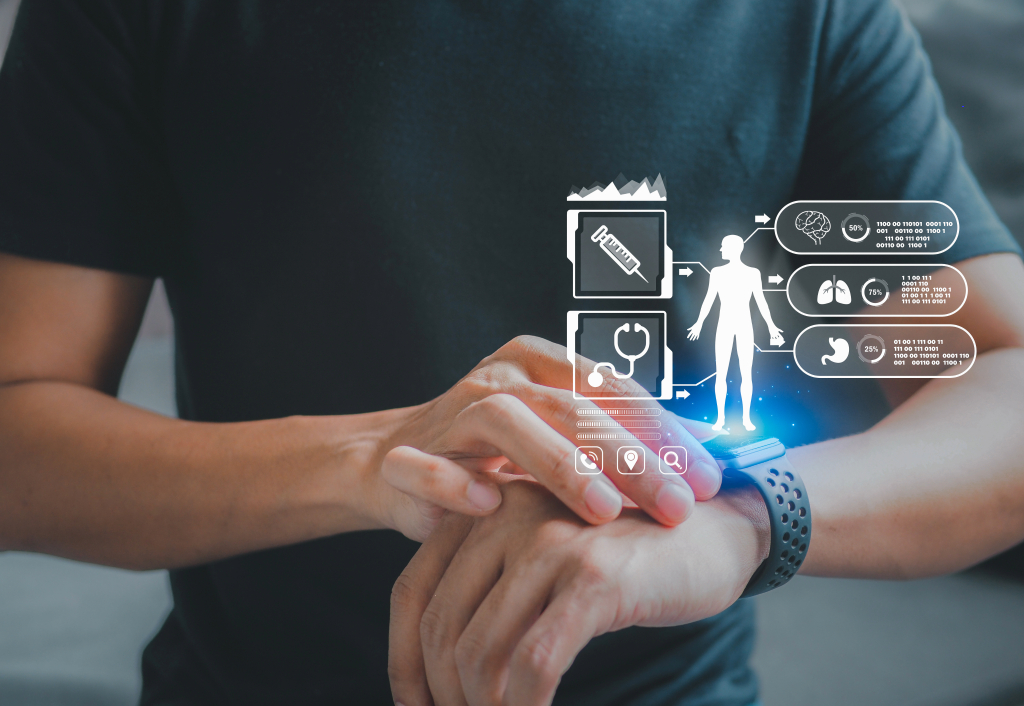Injections After a Car Accident
Why are injections used in personal injury cases? Injections in personal injury cases are prescribed to reduce inflammation, control pain, restore mobility and delay or prevent the need for surgery, ...
Keep Reading

One of the most significant trends in personal injury law in recent years involves wearable technology. Wearable technology devices compile extensive information on bodily systems, which may be instrumental in both supporting and defending personal injury lawsuits. The significance of wearable technology lies in their ability to objectively compile, measure, and monitor systems without the user’s involvement. Importantly, the data can provide a continuous timestamped log of the user’s lifestyle and activity levels before and after an accident.
According to the National Institutes of Health, roughly one in every three Americans use a wearable device to passively track health and fitness data. Examples of wearable technology include:
Smart watches, such as Garmin, Google, Samsung, Apple, and Fitbit, are particularly important when it comes to tracking activities. These wrist-worn computers communicate with the user’s smartphone and provides notifications of incoming calls, messages and other information.
The breadth of information through wearable technology is impressive. These devices can produce information on activity levels, exercise attainment, food consumption, weight, sleep, heart rate, skin temperature, and respiratory rate. They can compile data on location using GPS functionality. They can even measure vital signs, stress levels, and hydration levels, as well as be used to monitor diseases and chronic conditions.
In an article last week, we discussed the dangers of social media in for personal injury cases. The general theme was that, while some information on social media may support damages, other information could derail a personal injury claim. This is especially true when posts cast doubt on a person’s mental state or trauma before or after an injury. Wearable devices are no different. As the proliferation of wearable technology – and their capabilities – increases, so too does the potential for their use in litigation.
Wearable devices are beginning to play a critical role in personal injury cases by helping document and verify circumstances surrounding an incident. These technologies can offer compelling, real-time evidence that supports an injured person’s account of what occurred. Advances in smart wearables now provide real-time data on location, movement, and health.
Some wearable devices feature automatic fall detection. These sensors can detect when a person experiences a sudden impact consistent with a fall. When triggered, the wearable device will log the exact time and nature of the event. If a fall occurs during an accident and is recorded by a device, it creates a timestamped digital record that can align with the injured party’s description of how the injury occurred.
Ultimately, the data generated by smart devices can help build a more comprehensive and credible picture of the incident, which may prove essential in establishing liability and damages in a personal injury case.

Wearable devices can log location and time data, which may be used to confirm an injured party’s presence at a scene or establish activity before or after the event. While GPS is not new technology, its use in fitness tracking is relatively recent and is possible due to processors becoming more powerful. GPS comprises a network of 29 satellites in orbit and, at any given time, a user is within range to determine the precise location.
GPS tracking has become incredibly valuable. In car accidents, for example, location tracking could corroborate police reports or timelines. In premises liability cases, location tracking might show whether the claimant actually visited the site or how long the injured party was immobile after a fall.
Wearable devices record steps, heart rate, movement intensity, and even exercise types. Wearable technology compiles extensive information on bodily systems, including activity levels, exercise attainment, food consumption, weight, sleep, heart rate, skin temperature, and respiratory rate. They can even measure vital signs, stress levels, and hydration levels, as well as used to monitor diseases and chronic conditions. As the proliferation of these devices increases, so does the potential for their use in litigation.
In litigation, especially cases involving soft tissue injuries or chronic pain, one of the most contested areas is an injured party’s degree of disability. For example, if an injured party alleges they cannot walk due to an injury, but wearable data shows daily step counts consistent with pre-incident levels, the defense may argue the injury is exaggerated or non-existent. Conversely, a dramatic decline in physical activity following an injury may bolster an injured party’s credibility and demonstrate functional impairment.
Some wearable devices can track heart rate variability, sleep disruption, and stress levels, which can be indirectly linked to chronic pain or trauma. While not diagnostic in nature, this data may supplement medical records to show physiological responses consistent with pain, especially in cases where imaging is normal, but the claimant reports significant discomfort.
Wearable technology can play an important role in civil litigation due to its ability to collect extensive health and activity data. This data can provide critical evidence in personal injury cases, helping to substantiate or refute claims about a party’s physical condition and activity levels before and after an accident.
To ensure smart devices serve as a helpful tool rather than a liability, it is essential to handle them with care and intention. These devices can offer powerful evidence when used correctly, but missteps can undermine a claim. Following a few strategic practices can help maximize their value and avoid common pitfalls.
One of the most important steps is to preserve all relevant data immediately after an incident. This includes health metrics recorded by smartwatches, smart rings, or fitness trackers. Location history and movement tracking from a smartphone can also be important, as can any photos or videos taken at the scene of the accident. The data should be saved to a secure cloud or external storage to protect against accidental deletion or device malfunction.
It is also worth noting the deletion of wearable technology data by a personal injury plaintiff could constitute spoliation of evidence.
Not all data will be helpful. Sharing it prematurely or without legal advice could backfire. An experienced personal injury attorney can assess the relevance of the information and determine the best strategy for using it. They will decide how to handle any potentially unfavorable data that might be subject to discovery by the opposing side.
It could also be helpful to involve medical providers in the process. If wearable devices track recovery, this data may provide doctors with deeper insight into pain levels, sleep disturbances, mobility limitations, and healing progress. These details can bolster medical reports and expert testimony, especially when documenting long-term impacts of the injury. An experienced personal injury attorney will know how to leverage smart device data to support and strengthen your case. This begins with ensuring all relevant data is preserved correctly and can be authenticated if needed in court.
Wearables provide very technical data and expert witnesses will be needed to interpret the data. For instance, a biomechanical expert may explain how a sudden drop in physical activity supports a claim of ongoing pain or limited mobility. A sleep specialist might interpret smart ring data to show a pattern of sleep disruption consistent with post-traumatic stress. Because smart device data can be highly technical, an expert is needed to provide clear, relatable evidence juries can understand.
While wearable devices are not yet routinely used in personal injury litigation, their potential as crucial evidence is rapidly emerging. In cases where the nature or extent of injury is disputed—and especially where credibility is central—wearable data can offer compelling, objective support. The strategic use of this evidence will likely expand as devices become more prevalent and their outputs more medically and legally accepted.
When a party seeks to admit data from wearable technology at trial, they must first demonstrate the touchstone requirements of relevance, authenticity, and reliability. Relevance is fairly straightforward. Data on activity levels may strengthen or weaken allegations relating to injuries. Moreover, because some wearables can measure emotional states and stress levels, there is a potential to have the data admitted for claims of emotional and psychological injuries.
Authenticity may be established by the user directly through testimony. It seems unlikely, however, the user can testify regarding the device’s data collection method and accuracy rates. Under the Colorado Rules of Civil Procedure, therefore, it may be necessary to call a computer forensics expert to testify about the veracity of the information.
Within the concerns relating to authenticity lies the issue of reliability. While technology is quickly improving, some devices have erroneously tracked steps while a user travels by car for example. Other devices do not easily track cycling as an activity. Like anything in litigation, the proponent of the evidence must show its data collection methods are sound by presenting evidence from the manufacturer on error rates.
Even if a Court disallows the raw data from being admitted into evidence, the proponent may still be able to get its broad strokes admitted through testimony by an expert witness. The expert need not rely on admissible evidence in preparing an opinion. The best way of getting wearable device data before the jury may indeed be to have the expert review and rely on it as the basis for an expert opinion.
As wearables continue to grow in popularity, litigants must realize their evidentiary value. Production of this information will constitute the next wave of discovery challenges in personal injury lawsuits. At Bowman Law, we understand technology. Our top-rated accident lawyers are ready to help you navigate the challenges and complications of filing a personal injury claim.